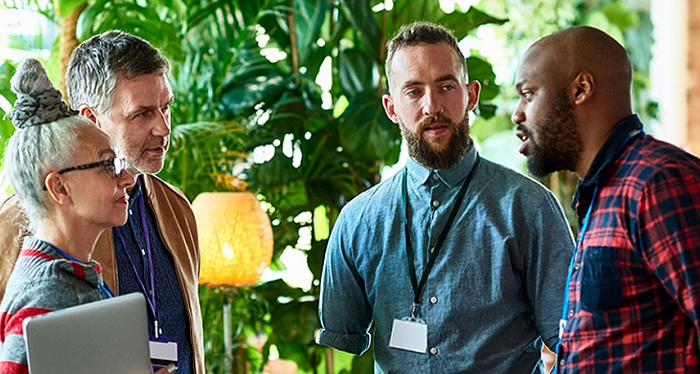[SPONSORED CONTENT]
The term neurodiversity refers to the way that everyone’s brains naturally work differently from one another.
Just as you may be born right-handed, where you sit on the cognitive spectrum will be unique to you.
Most people are neurotypical. This means they think and behave in a way that is similar to most other people. But around one in seven people are neurodivergent.
This means they behave, think, process and interpret information in ways that differ from most other people.
Traditional working practices are often designed with a neurotypical society in mind, which can make it difficult for neurodivergent employees to thrive at work.
How can you support neurodiversity in the workplace?
- Get to know the individual
Try to learn more about your team member’s neurodivergence so that you can best support them.
But remember, even though there are some behaviours or characteristics that are common to neurodivergent conditions, it’s important not to make any assumptions as these will vary from person to person.
- Provide supportive technology and equipment
Assistive technology and equipment may help some neurodivergent employees to carry out their roles.
For example, some people with dyspraxia might experience difficulties with their motor coordination, which can make using office equipment like a keyboard, mouse or printer difficult.
Some things you can invest in that might help neurodivergent employees feel more comfortable at work include:
- speech-to-text, text-to-speech or mind-mapping software
- dictation tools
- a digital recorder
- Communicate clearly
Some neurodivergent employees may communicate in different ways to neurotypical people.
For example, people with autism might not find it easy to read facial expressions or interpret your tone of voice and may take what you say literally.
They may not understand things like sarcasm or metaphors, or how to filter out less important information. So try to use direct language and say exactly what you mean.
- Assign work tasks appropriately
Try to think about the type of work, tasks and routines that will work best for the individual. For example, some people with ADHD may find static or repetitive work challenging.
So, they might work best in a diverse role, where they can take regular breaks and work flexible hours.
- Consider the physical environment
Traditional workspaces are often designed with the needs of a neurotypical society in mind.
However, bright lighting, lots of noise and interruptions in a busy office may feel overstimulating for some neurodivergent employees.
If your employee finds this challenging, you could try:
- Investing in adjustable lighting or desk lamps
- Using partitions and room dividers or providing a larger personal working space
- Providing standing desks
- Including clear instructions next to office equipment
- Allowing individuals to work from home
- Using pens, sticky notes, whiteboards, lockers and boxes to help with memory and organisation
For further information on how you can support neurodivergent employees at work, take a look at our manager’s guide.
